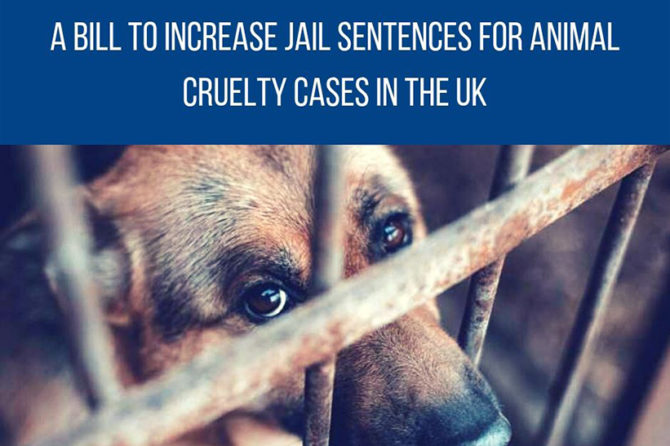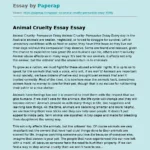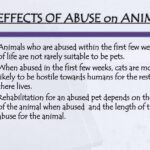In the unyielding corridors of justice, where the scales of law quiver delicately between right and wrong, the issue of animal cruelty stands as a stark reminder of humanity’s darker impulses. The sentence handed down to those who perpetrate such acts is not merely a reflection of their crimes, but a societal statement about our values and the importance we place on the lives of our non-human companions.
Understanding how long one can be incarcerated for animal cruelty is crucial in comprehending the broader ramifications of these laws. Sentencing guidelines serve as a compass, directing the judicial system in determining the appropriate penalties for such behaviors. These guidelines subtly weave a narrative that intertwines justice, rehabilitation, and societal protection.
At the heart of most jurisdictions lies a framework that differentiates between levels of animal cruelty. Generally, this framework categorizes offenses into two main classes: misdemeanors and felonies. Each classification possesses its own set of potential penalties, echoing the severity of the crime committed.
Misdemeanors, often viewed through the lens of lesser offenses, encompass acts of animal cruelty that result in moderate impact. This may include neglect, where an animal suffers due to inadequate care, or minor abuse, such as a lack of shelter or food. In many states, offenders found guilty of misdemeanors might face incarceration of up to one year, coupled with fines that can reach upwards of thousands of dollars. While this may seem minimal compared to other felonies, it serves a critical function: to educate and deter future infractions.
In stark contrast, felonies reflect the more sinister spectrum of animal cruelty—intentional harm or severe neglect. These are not just slips of judgment but deliberate acts that inflict pain, suffering, or death upon innocent animals. In jurisdictions that take a firm stance against such barbarity, sentences can range from one year to several years in prison. In extreme cases, lengthy imprisonment can extend beyond five years, depending on the crime’s horror or the number of animals involved.
As further complexity unfolds, aggravating factors can elevate a seemingly lesser offense to a felony. Situations where the perpetrator has a prior history of animal cruelty or cases involving particularly heinous acts—such as torture or organized animal fighting—are likely to invoke the maximum penalties available under the law. Here, the sentence transcends mere numbers; it speaks to a societal commitment to dismantle the normalization of such cruelty, fostering an environment that demands accountability.
Moreover, legal advocates tirelessly campaign for stricter penalties. For instance, recent efforts in countries like the United Kingdom have aimed to elevate sentences for animal cruelty offenses, reflecting an evolving perception of animal rights. Such legislative advancements symbolize a larger shift—a recognition that animals can no longer be treated as mere commodities or possessions, but as sentient beings deserving of protection.
While the sentencing guidelines are pivotal, the aftermath of legal consequences transcends the prison bars. The criminal record that accompanies a conviction can restrict offenders’ abilities to obtain employment, housing, or even care for animals in the future. This consequential ripple effect serves as a potent deterrent, urging those who harbor impulses toward cruelty to reconsider the ramifications of their actions.
However, amidst the strictures imposed by the judicial system, there exists the profound necessity for rehabilitation. Critics argue that punitive measures alone, while necessary, may lack the transformative spark required to address the underlying issues that lead to animal cruelty. Programs focusing on animal behavior, empathy training, and mental health support can significantly alter an offender’s trajectory. The goal is not simply to punish, but to break the cycle of violence that often pervades families and communities.
Transcending individual incidents, the cultural attitudes towards animals are equally as critical in shaping legislation and community response. In regions where animal rights are championed, the public interest fuels advocacy movements that push for tougher laws and more rigorous enforcement. Conversely, areas with lax attitudes may find themselves grappling with weak enforcement and minimal legislative attention to the plight of animals.
As society navigates through this moral landscape, the dialogue surrounding animal cruelty remains vivid and essential. Each case of cruelty serves as a striking reminder—the lives of so many innocents hang in the balance. The implications of how long one can be jailed for animal cruelty resonate far beyond the courtroom; they reverberate through our collective conscience, compelling us to examine our role in heralding a future that prioritizes compassion over cruelty.
Ultimately, the challenge remains: how do we balance punitive measures with opportunities for transformation? How do we cultivate a culture where animals are revered, not merely tolerated? These questions are not merely rhetorical but central to our evolving understanding of justice in the context of animal welfare. The clarity of sentencing guidelines is important, yet the essence of our humanity lies in our ability to nurture and protect those who cannot speak for themselves.









